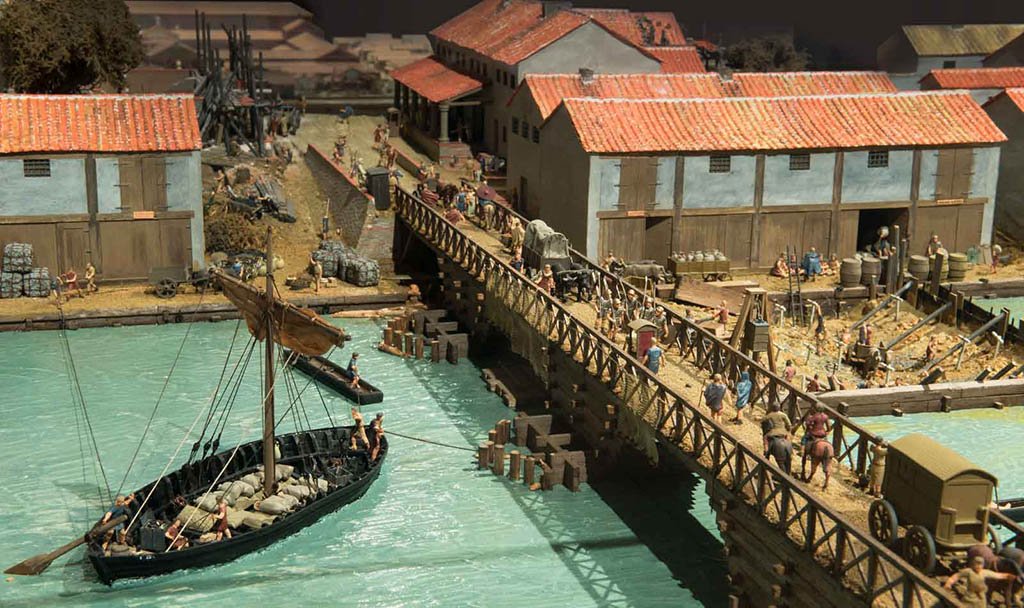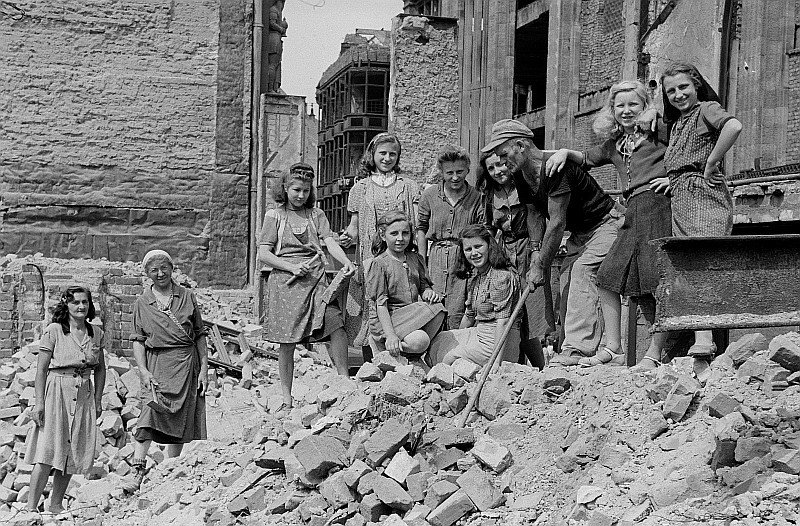Dark Earth: Recycling and Looting in Post-Roman Londinium
When Isla and Blue escape into the ruins of Londinium the city has been abandoned for almost a hundred years. If I was going to write my novel, I had to imagine my way into that landscape, the broken walls, the crumbling buildings, the animals and plants that had taken over in there, greening the stone, the eeriness of it all.
I began reading two books by Robin Fleming, a historian at Boston University. These books, Britain After Rome: The Fall and Rise 400-1070 and The Material Fall of Roman Britain, 300-525 CE, blew my mind.
Robin is a historian, a distinguished professor at Boston University and one of the world experts on this period.
By the time I found Robin’s two books I had read a lot. But I was frustrated. My questions just weren’t getting answered. What had struck me again and again was how often the history books and archaeology books and articles that I read seemed to focus only on the lives and culture of men in the late Roman and post Roman history of Britain. When I read historical novels this also seemed to be the case. ‘But where are the women?’ I kept asking, occasionally throwing a book at the wall. Why was this part of British history all about men on horses with swords?
Robin Fleming didn’t make a big deal about her focus on women, but women are front and central in her books nonetheless. She looked at the stuff of women’s lives – weaving tools, pots, brooches, jewellery - as well as the stuff of men’s lives – swords, knives, smithing tools. Often of course these objects overlapped. She used these objects to build a picture of what they were doing in these years after the Romans left.
What fascinated me most in reading Robin’s books was her emphasis on recycling. Everywhere she looked in post-Roman Britain she found evidence of recycling, whether it was the reuse of a stone Roman theatre ticket as a piece of jewellery, or the reuse of Roman nails to be smelted down to make new tools, or the reuse of Roman cremation urns as cooking pots when good pots were hard to find.
This wasn’t recycling as we think of it now – to try to keep rubbish out of landfill. This was recycling driven by need. After the Romans left Britain, all the stuff the British had got used to: kiln-fired pots, olive oil, fine cloth, wine – had stopped coming in.
The Roman artisans and builders had gone too and this left a serious skills shortage: sophisticated skills related to iron and copper smelting, board and plank making, stone quarrying, stone building, commercial butchery, horticulture and tanning, even the knowledge about how to make a wheel-thrown, kiln-fired pot seems to have disappeared. And that triggered, Robin says, fundamental changes in the way people lived. There is evidence of scavenging and looting everywhere in the material culture, people looking for ways to reuse or repurpose the stuff that the Romans had left behind.
This got me thinking about the 60,000 women called the Trummerfrauen (literally ‘rubble women’) who stripped out the rubble in bombed-out Berlin after the end of WW2. They were put to work at the end of the war by the Allied Forces, dragging out the rubble of brick walls with their bare hands for nine hours a day, chipping away the individual bricks so that they could be used again.
The tools of these Berlin rubble women were not mechanical diggers, but sledgehammers, picks, buckets and hand-winches. A chain of women transferred the bricks to the street, where they were cleaned and stacked. Others collected wood and steel beams, fireplaces, wash basins, toilets, pipes, and other household items to be reused. Half-starved and living on meagre rations, these women removed the rubble from the streets in barrows, wagons and lorries or loaded it onto the newly constructed light railways which transported it out to the mountainous heaps on the outskirts of the city. Those eight hills, the highest one rising 80 meters above the surrounding plateau, are now covered, like my meadow, in grass and scrub and trees.
What would the looters in ruined Londinium have been looking for? They would not have been much interested in stone because the native Britons and the incoming Saxons, Anglii and Frisians who farmed around the ruined city all built their houses in wood. But they did need metal. They needed metal a lot. The Roman iron mines were no longer being worked.
Tons of salvageable metal could be pulled out of a city the size of Londinium. Roman builders had used it in everything: clamps to hold stone walls together, nails, iron door and shutter handles, hinges and hooks, grills, grates, structural beams, lead window frames, gutters and water pipes.
I went to spend a day at the forge with historical blacksmith Hector Cole OBE to learn more about Anglo-Saxon forges. Hector has spent his life rediscovering Anglo-Saxon metalworking methods and skills. I asked him what he’d be looking for if he was a metal looter working the ruined city in 500AD.‘The big nails,’ he said, quick as a flash. ‘There’s a lot of good iron in a single nail, easy to smelt down too.’
‘But how would you get nails out of the woodwork,’ I asked. Although he was working his fire, I could see my question had transported him back into the ruined city in his imagination:
‘You’d start with the larger villas,’ he said. ‘You’d pull out all the wood you could get your hands on: door frames, doors, furniture, beams, panelling. You’d pile it all up and set fire to it. You’d have to wait for the wood to burn off so you’d spend a night by the fire in the ruins. I can think of worse things to do. In the morning, you’d sieve the ashes for the nails, and cool them in a bucket of water.’
When I put this idea to the team who look after the Billingsgate bathhouse, the ruins that inspired the Rookery in Dark Earth, Howard Benge nodded his head, his mind clearly racing. ‘Interesting.’ he said. ‘Archaeologists have found a lot of charcoal from spent fires in the dark earth layer that represents the ruined phase of Londinium. I’ve never heard anyone propose fires for metal looting. So interesting…’
As I stumbled from one question to another, consulting archaeologists, historians, and historical blacksmiths like Hector, Robin or Howard, as well as dragging my questions to the extraordinarily generous team who worked with me at the Museum of London, the landscape of the ruined city came more and more into focus, not just for me, but for all of us.





